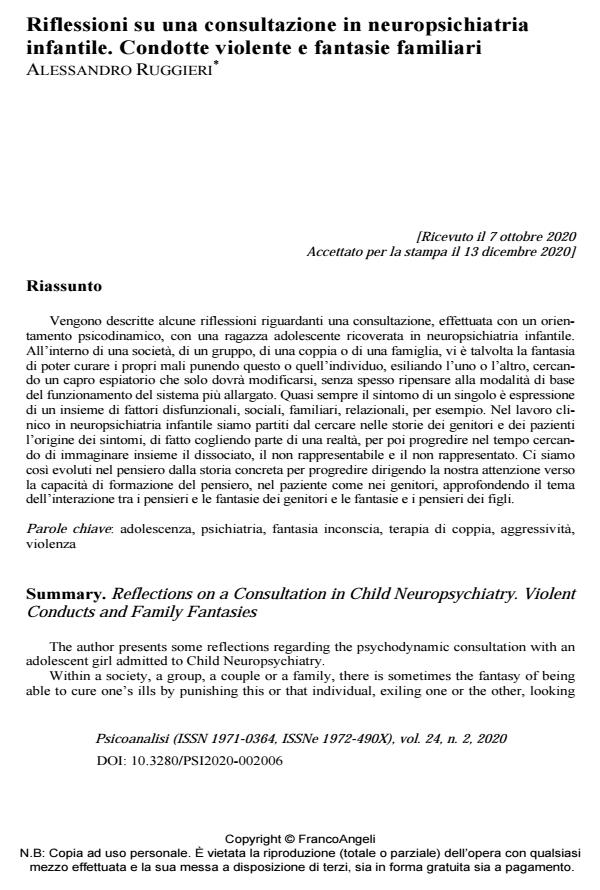Reflections on a Consultation in Child Neuropsychiatry. Violent Conducts and Family Fantasies
Journal title PSICOANALISI
Author/s Alessandro Ruggieri
Publishing Year 2021 Issue 2020/2
Language Italian Pages 20 P. 89-108 File size 226 KB
DOI 10.3280/PSI2020-002006
DOI is like a bar code for intellectual property: to have more infomation
click here
Below, you can see the article first page
If you want to buy this article in PDF format, you can do it, following the instructions to buy download credits

FrancoAngeli is member of Publishers International Linking Association, Inc (PILA), a not-for-profit association which run the CrossRef service enabling links to and from online scholarly content.
The author presents some reflections regarding the psychodynamic consultation with an adolescent girl admitted to Child Neuropsychiatry. Within a society, a group, a couple or a family, there is sometimes the fantasy of being able to cure one’s ills by punishing this or that individual, exiling one or the other, looking for a scapegoat which will have to change for all, often without rethinking the mode of operation of the system. Almost always the symptom of one is the expression of a social set, family, relational dysfunctional factors, as instance. In the clinical work in child neuropsychiatry we started by looking for the origin of the symptoms in the stories of parents and patients, then we made a progress trying to imagine together the dissociated, the unrepresentable and the un-represented. We have thus evolved from concrete history by directing our attention towards the thinking function, in the patient as in the parents, deepening the theme of the interaction between thoughts and fantasies of the parents and fantasies and thoughts of the sons. The au-thor presents a clinical vignette regarding a teenage girl and her family.
Keywords: Adolescence, psychiatry, unconscious fantasy, couples therapy, aggression, violence
Alessandro Ruggieri, Riflessioni su una consultazione in neuropsichiatria infantile. Condotte violente e fantasie familiari in "PSICOANALISI" 2/2020, pp 89-108, DOI: 10.3280/PSI2020-002006